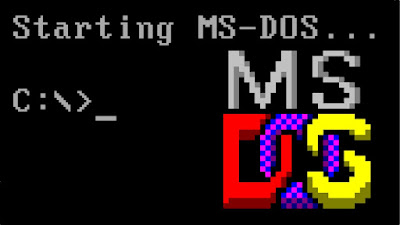Here's how MS-DOS is involved in current versions of Windows:
Command Prompt (cmd.exe): Windows includes a Command Prompt, which provides a text-based interface similar to the old MS-DOS command prompt. While the Command Prompt is not running a separate instance of MS-DOS, it provides a command-line interface where you can execute certain MS-DOS commands and run MS-DOS-based applications. The Command Prompt relies on a 32-bit subsystem known as the Virtual DOS Machine (VDM) to run these applications.
NTVDM (NT Virtual DOS Machine): On 32-bit versions of Windows, the NTVDM is a built-in feature that allows 16-bit MS-DOS-based applications to run within a separate virtual machine. NTVDM provides an isolated environment for these applications to execute safely on a modern Windows operating system.
WOW64 (Windows on Windows 64-bit): On 64-bit versions of Windows, the WOW64 subsystem allows 32-bit Windows-based applications, including the Command Prompt, to run on the 64-bit operating system. WOW64 also provides a compatibility layer that enables 32-bit MS-DOS-based applications to run on 64-bit Windows.
It's essential to note that these components are used to maintain backward compatibility with older MS-DOS and 16-bit Windows applications. The core of modern Windows operating systems is built on the Windows NT kernel, which is a fully modern and multitasking operating system. The Windows NT kernel is designed for stability, security, and compatibility with modern hardware and software applications.
As technology evolves and older applications become obsolete, the reliance on MS-DOS and 16-bit compatibility features is decreasing. Microsoft continues to focus on improving the core Windows experience, security, and compatibility with modern software and hardware, while maintaining limited support for legacy applications through the mechanisms mentioned above.
MS-DOS (Microsoft Disk Operating System) is indeed a historically significant and influential operating system. When it was first introduced in 1981, it played a vital role in the early days of personal computing and laid the groundwork for future operating systems. Here are some aspects that highlight the power and significance of MS-DOS:
Pioneering OS: MS-DOS was one of the first operating systems developed for IBM-compatible personal computers. It provided a command-line interface that allowed users to interact with the computer using textual commands.
Broad Adoption: MS-DOS quickly became the dominant operating system for IBM-compatible PCs in the 1980s and 1990s. Its widespread adoption contributed to the standardization of software development and hardware compatibility in the early PC industry.
Versatility: MS-DOS was designed to be lightweight and versatile, making it suitable for a wide range of computer hardware configurations. It could run on various processors and system architectures, allowing it to be used on a variety of computer systems.
Software Ecosystem: MS-DOS had a vast software ecosystem with a wide variety of applications and games developed for the platform. Many popular productivity software and early computer games were initially developed for MS-DOS.
Compatibility: Due to its dominance, many hardware and software developers ensured compatibility with MS-DOS, making it easier for users to find compatible components and software for their PCs.
Influence on Future OSs: The concepts and design principles from MS-DOS influenced the development of subsequent operating systems, including Microsoft Windows. MS-DOS served as the foundation for early versions of Windows, providing a command-line interface and compatibility with existing MS-DOS applications.
Learning Platform: MS-DOS provided a straightforward and accessible environment for learning about computers and programming. Many early computer enthusiasts and developers honed their skills on MS-DOS, leading to future innovations in the computing industry.
While MS-DOS's historical significance is undeniable, it's essential to recognize that it was eventually replaced by more advanced operating systems with graphical user interfaces (GUIs), such as Windows, which provided more user-friendly experiences. As technology evolved, operating systems with more sophisticated features and capabilities took centre stage, but the impact and legacy of MS-DOS continue to be felt in the computing world.


No comments:
Post a Comment
Contact The Wizard!
(he/him)